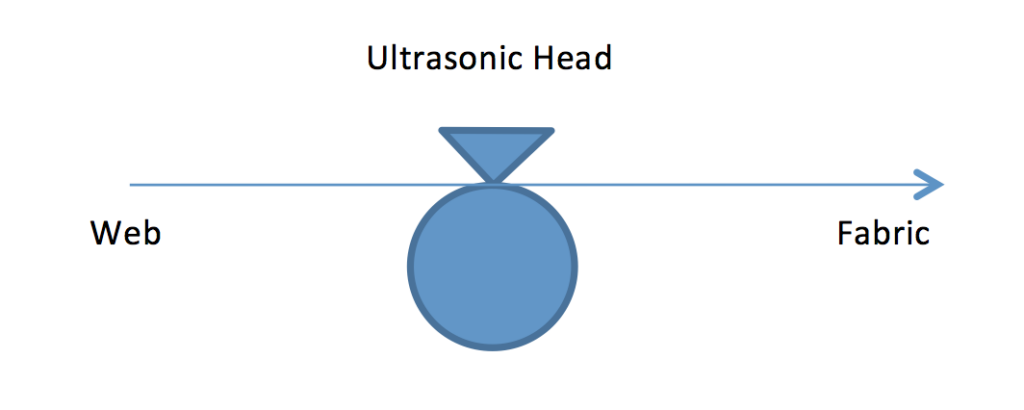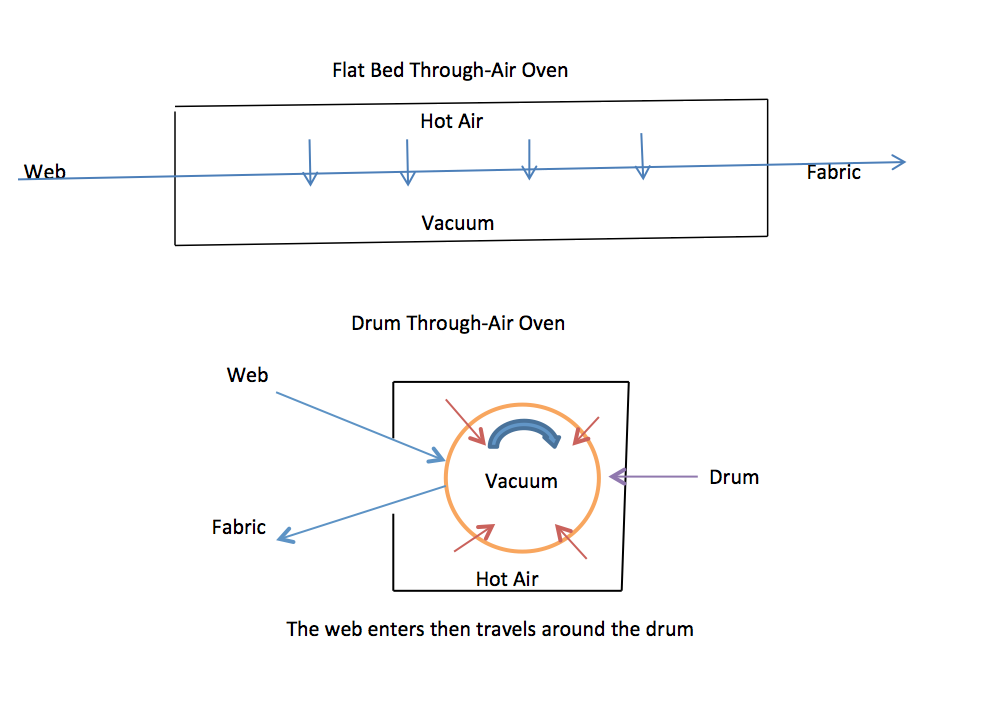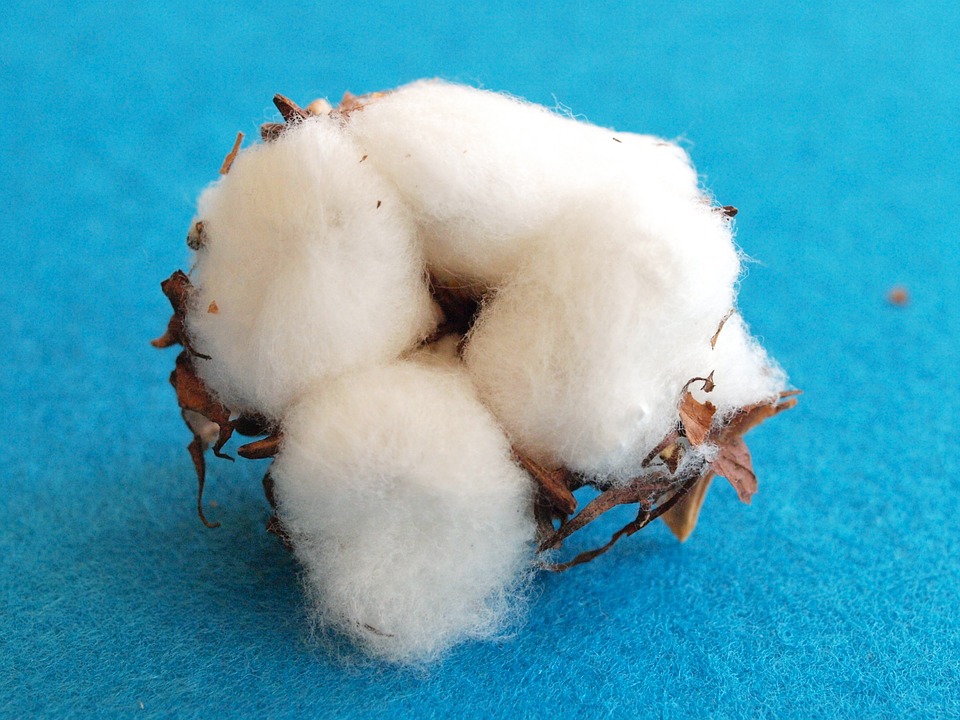Thermal bonded nonwovens are fabrics produced by using heat to melt thermoplastic powders or fibers (polyester, polypropylene, etc.). Since the bulk of thermal bonded nonwovens are produced using fibers, today we’ll spend some time discussing them. There are a number of ways to apply heat to the fibers. At the point where two or more fibers intersect, they can be heated to melt to each other. When they cool they will be bonded, which imparts strength to the fabric. These fabrics can be very lightweight and thin, or very heavy and thick, and can also fall somewhere in-between. They are used in many applications, including hygiene products (diapers and feminine pads), insulation (sound and heat), padding or cushioning (mattresses, furniture), and other products as well.
The thermal bonding process begins by taking fibers (thermoplastic fibers alone or blends with non-thermoplastic fibers such as cotton) and forming them into a fiber batt using either carding or air-laying machines. At this point, the webs can be heated using various methods.
Method 1: Calendering
Calendaring is passing the web between heated rolls that are under pressure, which ultimately squeezes the web together. The fibers are melted between the rolls. The pressure between the rolls then flattens the web, forming a flat, thin fabric.

These rolls can be solid or can contain patterns. The use of solid rolls results in all the thermoplastic fiber being melted, which produces a solid, stiff fabric. Patterns can also be engraved on the top roll, resulting in a roll where the parts that aren’t engraved are higher than the engraved areas; therefore, only the fibers are melted under the raised parts of the rolls (“point bonding” is another word used for this process). The bonding occurs at the intersections of the fibers in the areas that are between the raised parts of the top roll and the bottom roll. This produces flat, flexible, and soft fabrics.
Method 2: Ultrasonic
A device that produces heat using ultrasonic energy replaces the top drum and can produce the same type of fabrics as calendaring does. In ultrasonic bonding the pattern, if any, is on the lower roll.

Both of these types of fabrics (calendered and ultrasonic) are limited in fabric weight because if you get the web too thick (heavy), heat will not transfer to the middle of the web and it will not remain bonded.
Method 3: Through-Air Bonding
Webs are produced and run through an oven that is heated on one side. On the other side (or really, the inside), negative pressure pulls the hot air through the web to melt and bond the fibers. This allows for even heat throughout the entire web. Thick, lofty fabrics can be produced by this method. If the web is sandwiched tightly between two belts while heating, thin fabrics can be produced as well.

Cotton in Thermal Bonded Nonwovens
Cotton can be used to produce thermal bonded nonwoven fabrics if it is blended with a thermoplastic fiber, and it can be blended with all types of thermoplastic fibers (polyester, polypropylene, polyethylene, etc.). Blends up to 80% cotton have been used to make fabric. However, since strength of thermal bonded nonwovens comes from the thermoplastic fibers melting to each other at the fiber intersections, the more cotton you add, the less strength the fabric will have. Why? Because where any cotton fibers intersect there will be no bonding. But where there is a meeting of thermoplastic and cotton fibers, the thermoplastic will bond to the cotton.
Ultimately, you should feel free to use cotton in your thermal bonded fabrics, adding as much as possible until you reach the strength requirement limit required for your product.
